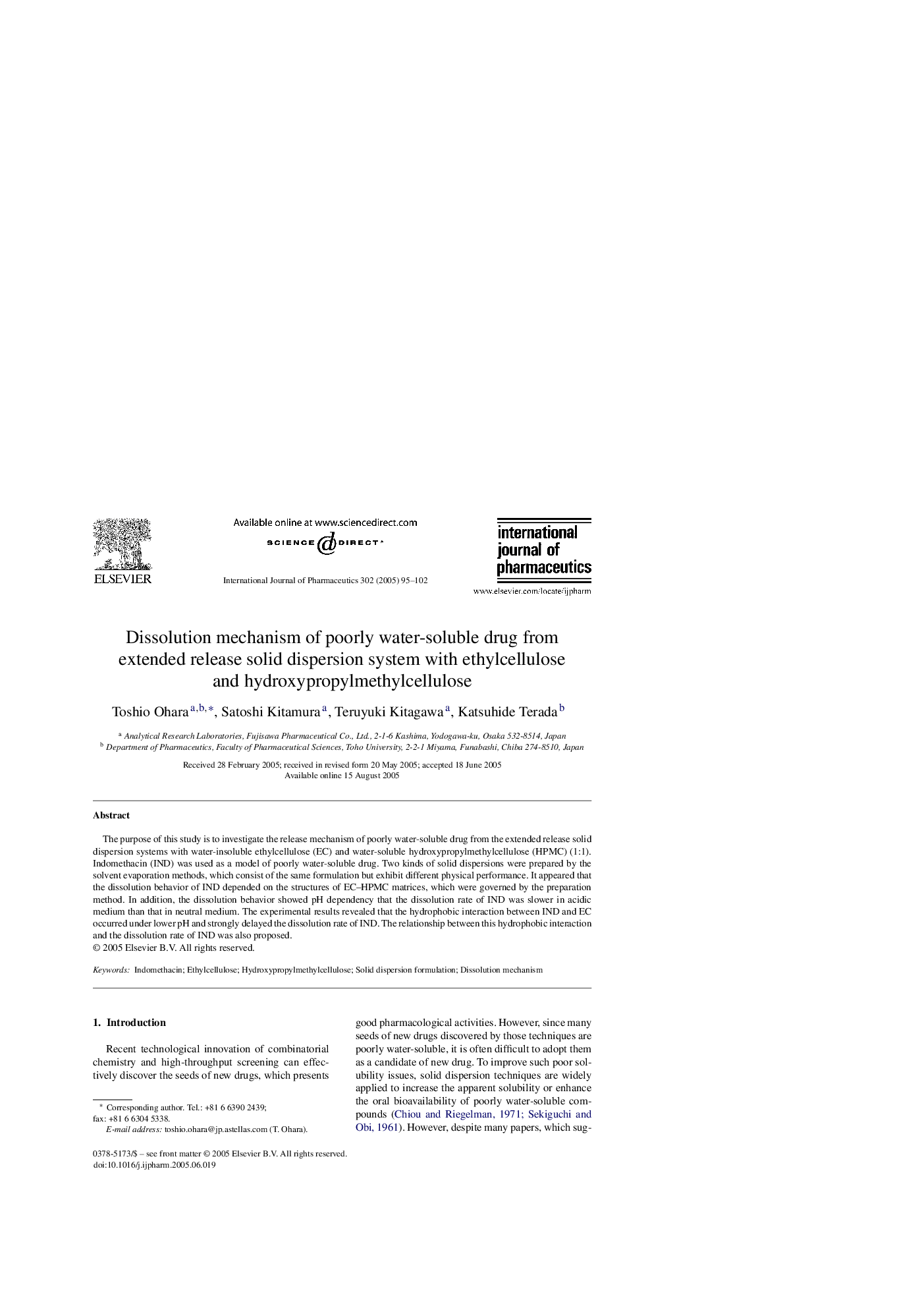| Article ID | Journal | Published Year | Pages | File Type |
|---|---|---|---|---|
| 9918624 | International Journal of Pharmaceutics | 2005 | 8 Pages |
Abstract
The purpose of this study is to investigate the release mechanism of poorly water-soluble drug from the extended release solid dispersion systems with water-insoluble ethylcellulose (EC) and water-soluble hydroxypropylmethylcellulose (HPMC) (1:1). Indomethacin (IND) was used as a model of poorly water-soluble drug. Two kinds of solid dispersions were prepared by the solvent evaporation methods, which consist of the same formulation but exhibit different physical performance. It appeared that the dissolution behavior of IND depended on the structures of EC-HPMC matrices, which were governed by the preparation method. In addition, the dissolution behavior showed pH dependency that the dissolution rate of IND was slower in acidic medium than that in neutral medium. The experimental results revealed that the hydrophobic interaction between IND and EC occurred under lower pH and strongly delayed the dissolution rate of IND. The relationship between this hydrophobic interaction and the dissolution rate of IND was also proposed.
Related Topics
Health Sciences
Pharmacology, Toxicology and Pharmaceutical Science
Pharmaceutical Science
Authors
Toshio Ohara, Satoshi Kitamura, Teruyuki Kitagawa, Katsuhide Terada,
